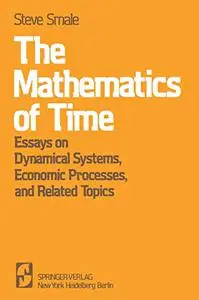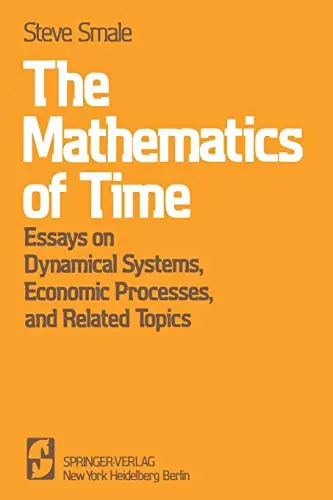The Mathematics of Time: Essays on Dynamical Systems, Economic Processes, and Related Topics by Steve Smale
English | PDF | 1980 | 154 Pages | ISBN : 0387905197 | 20.9 MB
Introduction to conjugacy problems for difieomorphisms. This is a survey article on the area of global analysis defined by differentiable dynamical systems or equivalently the action (differentiable) of a Lie group G on a manifold M. An action is a homomorphism G-Diff(M) such that the induced map GXM-M is differentiable. Here Diff(M) is the group of all diffeomorphisms of M and a diffeomorphism is a differentiable map with a differentiable inverse. Everything will be discussed here from the C«> or C" point of view. All manifolds maps, etc. will be differentiable (Cr, 1;;:; r ~ 00) unless stated otherwise.
I n the beginning we will be restricted to the discrete case, G = Z. Here Z denotes the integers, Z+ the positive integers. By taking a generator jEDiff(M), this amounts to studying diffeomorphisms on a manifold from the point of view of orbit structure. The orbit of xEM, relative toj, is the subset {f"'(x)/ mEZ} of M or else the map Z-M which sends minto f"'(x). The finite orbits are called periodic orbits and their points, periodic points. Thus xEM is a periodic point if f"'(x) =x for some mEZ+. Here m is called a period of x and if m = 1, x is a fixed point. Our problem is to study the global orbit structure, i.e., all of the orbits on M.
The main motivation for this problem comes from ordinary differential equations, which essentially corresponds to G=R, R the reals acting on M. There are two reasons for this leading to the diffeomorphism problem. One is that certain differential equations have cross-sections (see, e.g., [114]) and in this case the qualitative study of the differential equation reduces to the study of an associated diffeomorphism of the cross-section. This is the reason why Poincare [90] and Birkhoff [19] studied diffeomorphisms of surfaces.
I believe there is a second and more important reason for studying the diffeomorphism problem (besides its great natural beauty). That is, the same phenomena and problems of the qualitative theory of ordinary differential equations are present in their simplest form in the diffeomorphism problem. Having first found theorems in the diffeomorphism case it is usually a secondary task to translate the results back into the differential equations framework.
Assuming M compact, we put on Diff(M) the topology of uniform cr convergence. We will usually keep M compact because for noncompact M, there are different behaviours at infinity that one could consider. See, for example, [86]. These lead to different problems and we don't wish to get into such questions here.



